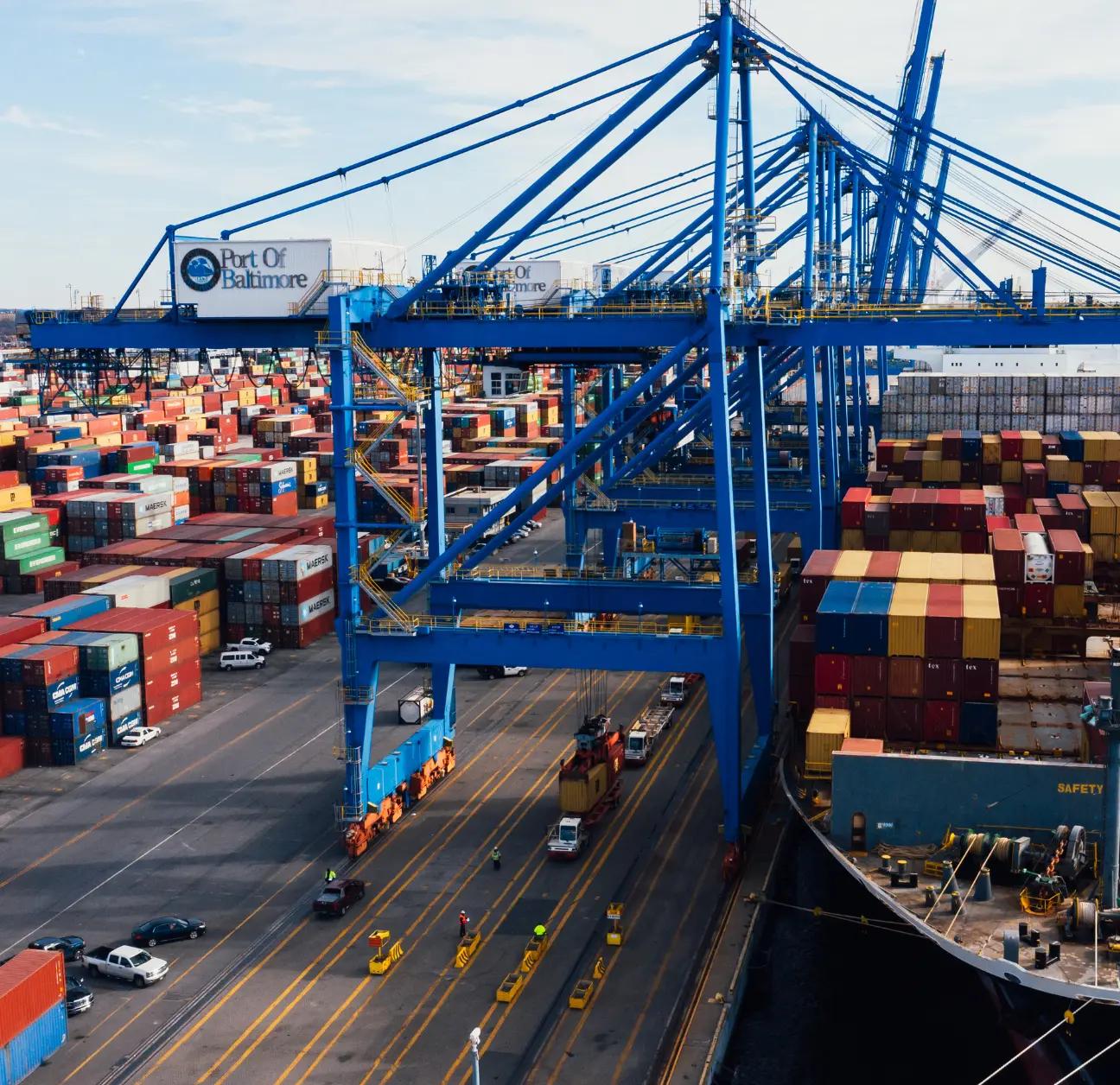Supply chain management and transportation management systems run the gamut from1980s-era systems to modern cloud platforms. Chain.io was built to integrate your TMS to any platform, regardless of the era it was built in, with ease.
Supply chains today are more complicated than ever. Global trade keeps expanding, tech stacks are multiplying, and customer expectations are only getting sharper. It’s a perfect recipe for chaos if your supply chain processes aren’t airtight.
Too often, companies rely on disconnected systems and ad hoc workflows to keep things moving, but that only works until it doesn’t. Delays stack up, errors sneak in, and everyone scrambles to figure out what went wrong.
This is where supply chain integration and collaboration come into play. When your systems are connected and your partners are aligned, you unlock better performance and real-time data that helps you make smart decisions quickly.
This article unpacks why integration and collaboration are essential—and lays out practical steps to help your business get both right.
Why integration and collaboration are non-negotiable
It’s easy to think of supply chain integration and collaboration as the same thing, but they’re different pieces of the puzzle. Integration is about connecting your systems and tools so that data flows smoothly. Collaboration is about getting your teams and supply chain partners to work together effectively.
You can’t have an effective supply chain without both. Poor integration leads to siloed data, manual workarounds, and delays.
Poor collaboration means partners are out of sync, creating confusion and missed expectations. For example, your production schedules can slip without real-time data sharing, or you might miss critical delivery windows.
At Chain.io, we see these issues every day. The truth is, supply chains involve too many moving parts to manage manually.
Whether you’re working with freight forwarders, shippers, or external partners, the only way to maintain operational efficiency and customer satisfaction is through tight integration and clear collaboration.
The risks of staying disconnected
One major consequence of poor integration is facing supply chain disruptions, which can create significant operational challenges. One shipper we worked with- a large personal electronics manufacturer - had basic integrations with overseas suppliers, but the data flow was too shallow.
As a result, their customers couldn’t reorder dynamically, leading to stockouts and lost sales. Inventory levels and available-to-ship numbers were inaccurate, hitting supply chain performance and the bottom line.
On the freight forwarding side, we’ve seen IT teams bogged down maintaining homegrown tools. Instead of driving supply chain innovation, their days were spent patching outdated tech. That slows down the entire supply chain operation and creates avoidable disruptions.
When systems and teams aren’t aligned, you’re likely to see:
- Delayed data and inconsistent updates
- Manual reentry of data, which eats up time and leads to mistakes
- Compliance gaps that expose you to risk
- High operational costs that undercut profitability
These issues don’t just hurt your bottom line; they also weaken the benefits of supply chain efficiency and trust across the supply chain.
The benefits of getting integration and collaboration right
When you nail integration and collaboration, your supply chain starts working as it should. Additionally, enhancing supply chain integration can help foster a culture of cooperation between partners.
You get:
- Real-time visibility across your entire supply chain
- Fewer manual processes, freeing up your team for higher-value work
- Stronger partner relationships thanks to smoother handoffs and shared goals
- Better, faster decisions driven by accurate data
- Scalability without constant firefighting or reengineering
A fully integrated supply chain also makes it easier to mitigate risks and respond to disruptions. Whether it’s a natural disaster or a supplier change, having clear lines of communication and connected systems means you can adapt quickly.
Strategies to improve integration
So, how do you build a supply chain that’s as connected as it needs to be?
Here are some practical steps:
- Focus on core partners first: You don’t need to deeply integrate with every supplier on day one. Apply the 80/20 rule: prioritize the partners who handle most of your volume.
- Use platforms with pre-built connectors: Tools like Chain.io offer pre-built integrations with standard supply chain systems, making connecting faster and easier. Understanding the types of integration in supply chains becomes essential.
- Automate data mapping: Instead of wrangling spreadsheets, use middleware that standardizes data formats. This is a key part of internal integration in the supply chain, reducing delays and errors.
- Modernize EDI: Electronic data interchange (EDI) is still the backbone for many supply chains. The goal isn’t to eliminate it but to make it smarter and more automatic.
- Design for flexibility: Your network will evolve. Build a system that lets you onboard or swap out partners without tearing everything down—a strategy highlighted in supply chain integration strategies.
A universal adapter approach, like the one Chain.io uses, makes it much easier to achieve effective supply chain integration at scale.
Strategies to improve collaboration
Integration alone isn’t enough. Your supply chain partners also need to work well together.
Here’s how to make that happen:
- Centralize data and messaging: Use a single platform for communication and real-time data sharing so everyone stays aligned.
- Standardize formats and expectations: Make sure all partners use the same playbook. This reduces errors and sets clear benchmarks.
- Share KPIs transparently: Track and report on key performance indicators like on-time delivery and milestone accuracy through a shared scorecard. This builds trust and accountability.
- Build trust and open communication: The best supply chain collaboration software is only as good as the people using it—regular check-ins and open dialogue matter just as much as tech.
Ultimately, effective supply chain collaboration means aligning processes and goals—not just tools. This fosters resilience and helps maintain significant cost savings across the supply chain.
Make supply chain strength your competitive edge
Strong supply chain integration and collaboration aren’t just nice-to-haves anymore—they’re non-negotiable for modern supply chain management.
They help you maintain inventory management, reduce errors, and keep your supply chain operations agile and responsive. Without them, you risk getting stuck in endless workarounds that drag down your entire supply chain.
If your company is still dealing with fragmented systems or struggling to align with supply chain partners, now is the time to act.
Whether you adopt a supply chain collaboration platform, invest in supply chain technology, or revisit your enterprise resource planning setup, the steps you take today can pay off in improved efficiency, enhanced supply chain resilience, and long-term growth.
Want to see how Chain.io can support your integration and collaboration goals?
Explore more about the importance of integration in the supply chain, or book a demo to learn how our platform can make your supply chain a competitive advantage.







